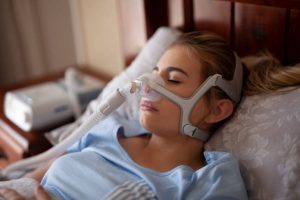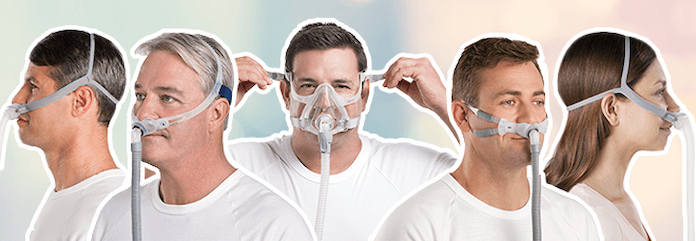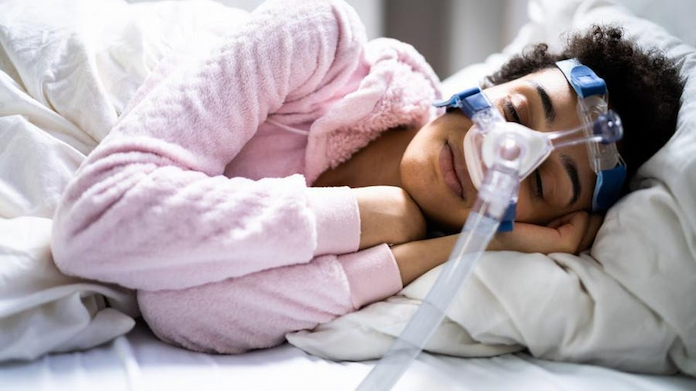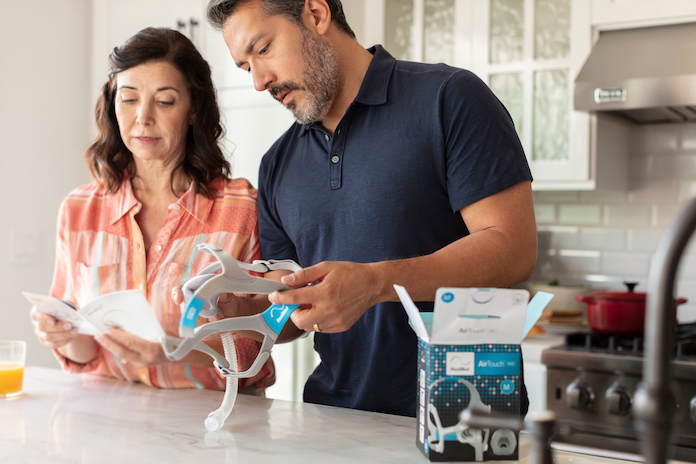
Between 2% and 9% of people worldwide suffer from sleep apnea, a prevalent sleep problem. Obstructive sleep apnea is the most prevalent type, and it happens when tissues in your throat block your airway while you’re sleeping, causing your breathing to stop and start. That may result in low oxygen levels, poor sleep, and a reduction in your general physical condition.
Long-term treatment for sleep apnea symptoms may involve lifestyle changes, including weight loss and stress management therapy such as getting regular massages or exercise. However, continuous positive airway pressure (CPAP) therapy is one of the best remedies that can instantly alleviate sleep apnea symptoms.
A CPAP mask is an essential piece of gear for CPAP therapy. It uses tubing to connect to your CPAP machine. It seals off your mouth and nose to deliver compressed air that helps keep your airways open while you sleep. Despite being necessary for such therapy, CPAP masks are typically offered separately from new CPAP equipment.
This is due to the range of sizes and forms they’re available in which is something you’ll immediately notice when shopping for one. To help you pick the ideal option for your requirements, we’ll look at the various styles and explain the types suitable for different sleepers.
Types of CPAP Masks

When searching for the right option, you’ll notice a vast range of CPAP masks available in various designs, each appropriate for specific sleeping patterns and pressure requirements. Let’s examine the most popular kinds and their advantages and disadvantages.
Full Face
A full-face mask is a style that is big enough to cover your nose and mouth, sealing both of your airways. It covers much of the lower half of the face, which is secured in place by side straps. Full-face masks are recommended for those who need a high-pressure CPAP setting, sleep on their backs, or mostly breathe through their mouths while asleep. The full-face type may be too heavy and thick for persons who sleep on their sides, stomachs, or lightly.
Nasal
Nasal CPAP masks give airflow to the nasal cavity by covering a tiny area around the nose, extending from your nasal bridge to your upper lip.
The features of both full-face masks and nasal pillows are well-balanced in the nasal types. While less comfortable for the stomach, side and active sleepers than full-face covers, this type performs better in high-pressure environments than nose pillows. Furthermore, nasal masks come in various shapes to accommodate most facial characteristics. However, people who only breathe through their mouths while they sleep or those who frequently experience nasal blockages should not use nasal CPAP masks.
Nasal Pillows
Nasal pillows rest on the bridge of your nose. This type forms a seal at the nostrils and directs airflow to the nasal cavity while secured by headgear. Nasal pillows are thin and have fewer points of contact with the face. If you toss and turn as you sleep or find bulkier covers irritating, nasal pillows are one of the more comfortable CPAP mask alternatives.
However, low to moderate-pressure settings are preferable for using nasal pillows. The nasal prong mask has a design that is comparable to the nasal cushion. This design has two inflatable prongs that fit inside the nasal cavity and seal the nostrils.
Oral
This less typical mask type covers and ventilates your mouth. This design is effective for people who frequently have allergies, congestion, or nasal obstructions while sleeping. The air blasted through your mouth can readily escape through your nose if you don’t have a nasal blockage, making this type a poor option.
Total Face
Face-covering masks completely enclose the face, giving balanced air pressure to the nose and mouth, much like full-face masks. Even though this form of mask is less popular, it’s excellent for those who sleep on their backs or have a medical condition that makes using other CPAP masks impossible.
What to Consider When Choosing a CPAP Mask?

If you’ve never used one before, sorting through the hundreds of models can be overwhelming. Remember to consider each of these factors in the context of your particular demands, such as your sleeping habits, comfort preferences, and any doctor’s prescription for CPAP therapy.
Doctor’s Recommendations
The advice from your doctor is the most crucial factor in selecting the right one. For your treatment, your doctor will prescribe a precise amount of pressure. Which kind of mask you can use will depend on this. Additionally, your doctor is an expert in the benefits and drawbacks of many styles and knows which one is most likely to be effective for you.
Machine Compatibility
Generally speaking, most masks have a universal fit that works with all CPAP machines. Though they are few and far between, this rule does include some exceptions. Remember that part of the hardware needed to connect your mask to your CPAP machine is mask-specific. But CPAP masks frequently have short tubes that fit into standard CPAP tubing and custom-made adapters.
Fit and Sizing
You can select a mask that fits your head and face thanks to the variety of sizes available. Your mask may not air seal and work correctly if the fit and dimensions are incorrect. A wrong fit might also cause pain and discomfort as you sleep. Typically, masks come in small, medium, and big sizes. Additionally, some brands provide women-specific sizing and a variety of alternatives to match a broader range of face shapes.
Comfort
Comfort is important because you’ll need to wear your CPAP mask for 7 to 9 hours every night. High-quality materials, an appropriate fit, and the ideal style to accommodate your favourite sleeping position are all characteristics of a pleasant sleeping mask. Do not hesitate to test out various models and sizes.
How Often Do You Change a Face Mask on a CPAP?

Regardless of the mask type, the recommendations are to change the cushion (the part that directly contacts your face) once or twice a month and the entire mask at least once every six months. It’ll help to ensure the efficacy of your therapy if you replace your CPAP supplies as often as advised by your supplier.















